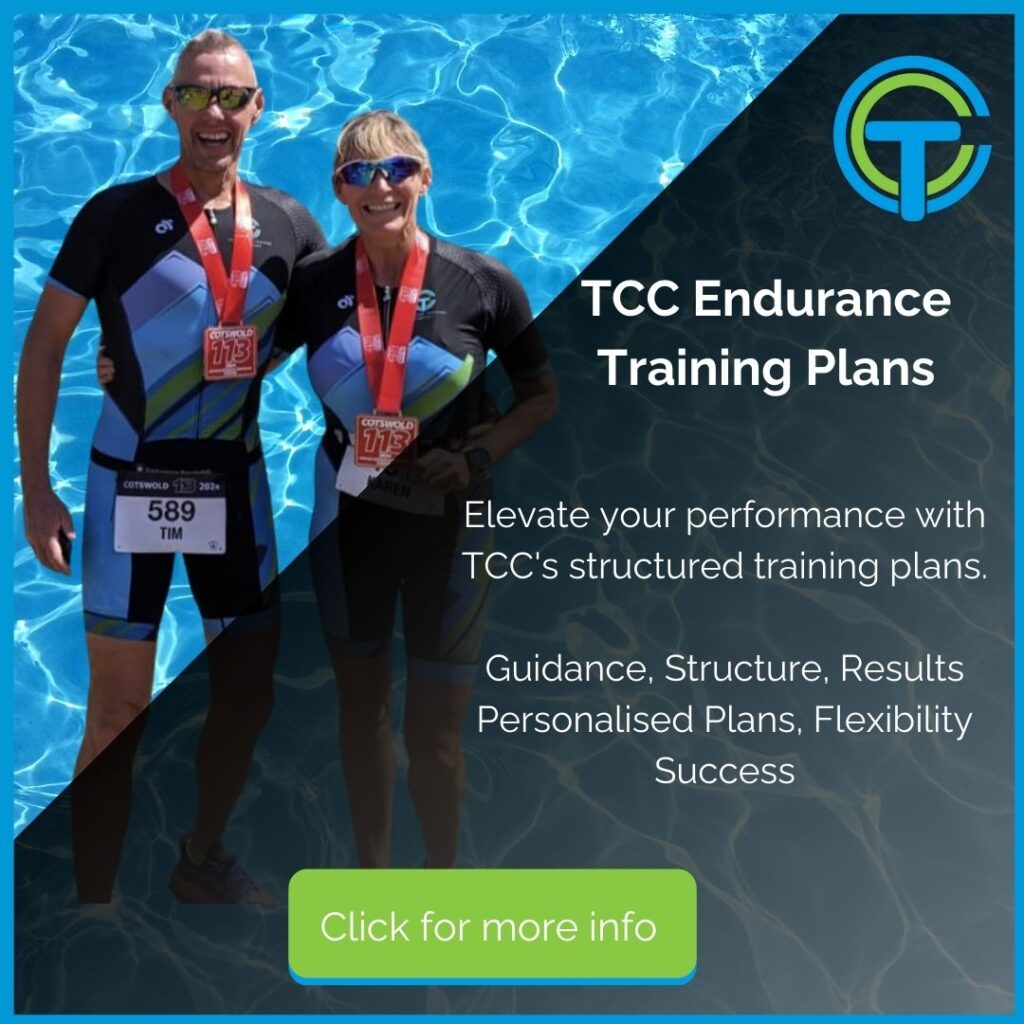Introduction
Triathlons challenge athletes with a combination of swimming, cycling, and running. Being able to swim, cycle, and run is only part of the package; nutrition and hydration play a large part in an athlete’s performance, especially when the distances start increasing. This blog explores the essentials of in-race fuelling and hydration, particularly for endurance events like 70.3 (Half-Ironman) and Ironman distances, ensuring athletes can maintain optimal performance throughout the race.
Understanding Energy Utilisation in Triathlons
Aerobic glycolysis:
Aerobic glycolysis is a metabolic process that efficiently generates energy by utilising oxygen to metabolise carbohydrates and fats. This pathway is predominant during sustained, moderate-intensity activities where the oxygen supply meets the energy demands. It is crucial in endurance sports, as it allows athletes to maintain a steady pace over long periods by maximising energy production from available substrates while minimising fatigue. Unlike anaerobic glycolysis, aerobic glycolysis does not lead to the rapid accumulation of metabolic by-products and hydrogen ions (H+), which helps athletes avoid the onset of muscle fatigue and allows for prolonged activity (Coyle, 1995).
Anaerobic glycolysis:
On the other hand, Anaerobic glycolysis is a process that converts glucose into energy quickly and without needing oxygen. This pathway is crucial during high-intensity exercise when energy demands exceed the oxygen supply and the aerobic system cannot provide energy quickly enough. However, as with all physiology, there is a cost to this rapid energy release; it results in the production of H+. The accumulation of hydrogen ions contributes to a decrease in the pH level of muscle cells, a state known as acidosis. This increase in acidity can interfere with enzymatic reactions in energy metabolism and muscle contraction, leading to fatigue and decreased muscle performance (Robergs, Ghiasvand and Parker, 2004).
As the race progresses, glycogen stores—the primary source of stored carbohydrates—begin to deplete. This typically occurs within 90 to 120 minutes of continuous exercise, depending on the intensity of the exercise. To prevent energy shortfalls, athletes must replenish their carbohydrates during the race (Burke and Read, 1989).
The Critical Role of Hydration and Electrolytes
Hydration is equally critical as fuelling. Adequate fluid intake is essential for maintaining blood volume, regulating body temperature, and ensuring nutrient transport. Dehydration can lead to a significant decrease in performance, increased fatigue, and overheating.
Electrolytes, particularly sodium, potassium, and magnesium, play crucial roles in muscle function and water balance. Loss of electrolytes through sweat can lead to muscle cramps, weakness, and heat exhaustion. Athletes need to include electrolytes in their hydration plan, especially sodium, which helps retain fluids and prevent hyponatremia, a condition caused by low sodium levels that can be life-threatening in severe cases.
Recommendations for Carbohydrate Intake
The amount of carbohydrates an athlete needs can vary widely but generally falls within these guidelines:
Ironman Distances: 60-90 grams of carbohydrates per hour.
70.3 Distances: 30-60 grams per hour.
Selecting a mix of different types of carbohydrates (e.g., glucose and fructose) can help maximise the absorption rate and minimise gastrointestinal discomfort (Nikolaidis et al., 2018). There is emerging evidence that athletes can tolerate up to 100-120 grams; however, this needs to be practised and developed over time (Podlogar and Wallis, 2022).
Hydration Strategies
Effective hydration strategies are tailored to individual sweat rates, which can vary based on fitness level, environmental conditions, and acclimatisation:
Before the Race: Start well-hydrated a few days before the event, and on race day, sip a sports drink that contains electrolytes.
During the Race: Regularly consume fluids with electrolytes, particularly sodium. Drink early and at regular intervals, aiming to match intake with sweat losses as closely as possible without over-drinking.
After the Race: Rehydrate with fluids containing electrolytes and a small amount of carbohydrates to help replenish lost stores and aid recovery.
Remember, your hydration strategy is unique to you. It’s advisable to practice during training to determine what works best for your body and to ensure you can comfortably maintain it on race day. This individualized approach empowers you to take control of your performance and optimize your results.
Practical Fuelling Strategies
Pre-Race: Begin the race with full glycogen stores by eating a high-carbohydrate meal 3-4 hours beforehand.
During the Race: Use portable and digestible carbohydrate sources like gels, chews, and sports drinks.
Adjust your intake based on the duration, race intensity, and individual needs.
Post-Race: To optimise recovery, consume a mix of carbohydrates and protein soon after finishing.
Conclusion
In-race fuelling and hydration are pivotal for triathlon success, particularly over longer distances. Understanding the nuances of how your body metabolises energy, coupled with a personalised and practised nutrition and hydration strategy, can lead to significant improvements in performance. By integrating these scientifically-backed recommendations into your race plan, you can trust that your energy and hydration needs are met, allowing you to perform at your best throughout the race.
References
Burke, L.M. and Read, R.S. (1989) ‘Sports nutrition. Approaching the nineties’, Sports Medicine (Auckland, N.Z.), 8(2), pp. 80–100. Available at: https://doi.org/10.2165/00007256-198908020-00002.
Coyle, E.F. (1995) ‘Integration of the Physiological Factors Determining Endurance Performance Ability’, Exercise and Sport Sciences Reviews, 23(1), p. 25.
Nikolaidis, P.T. et al. (2018) ‘Nutrition in Ultra-Endurance: State of the Art’, Nutrients, 10(12), p. 1995. Available at: https://doi.org/10.3390/nu10121995.
Podlogar, T. and Wallis, G.A. (2022) ‘New Horizons in Carbohydrate Research and Application for Endurance Athletes’, Sports Medicine, 52(1), pp. 5–23. Available at: https://doi.org/10.1007/s40279-022-01757-1.
Robergs, R.A., Ghiasvand, F. and Parker, D. (2004) ‘Biochemistry of exercise-induced metabolic acidosis’, American Journal of Physiology-Regulatory, Integrative and Comparative Physiology, 287(3), pp. R502–R516. Available at: https://doi.org/10.1152/ajpregu.00114.2004.




